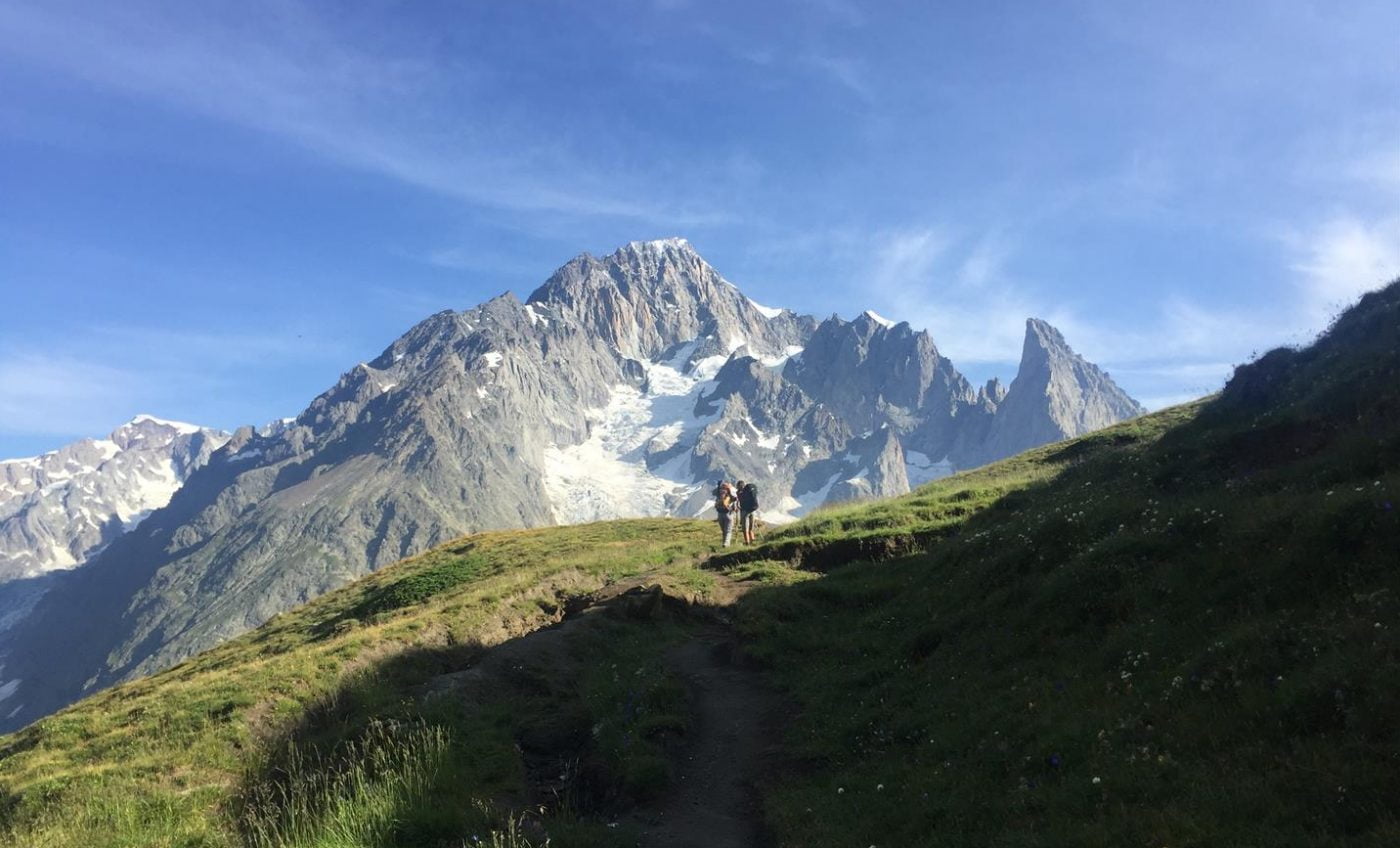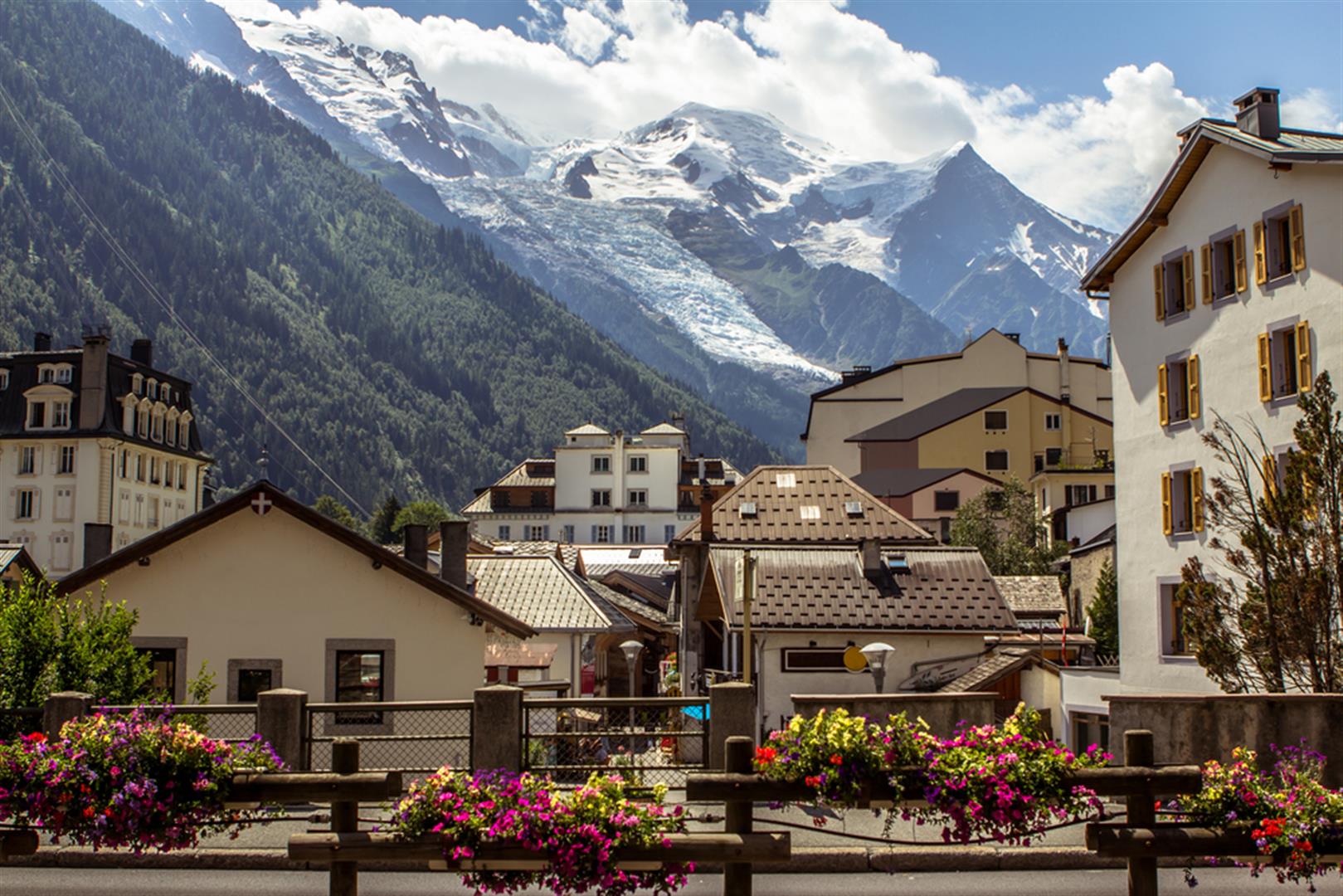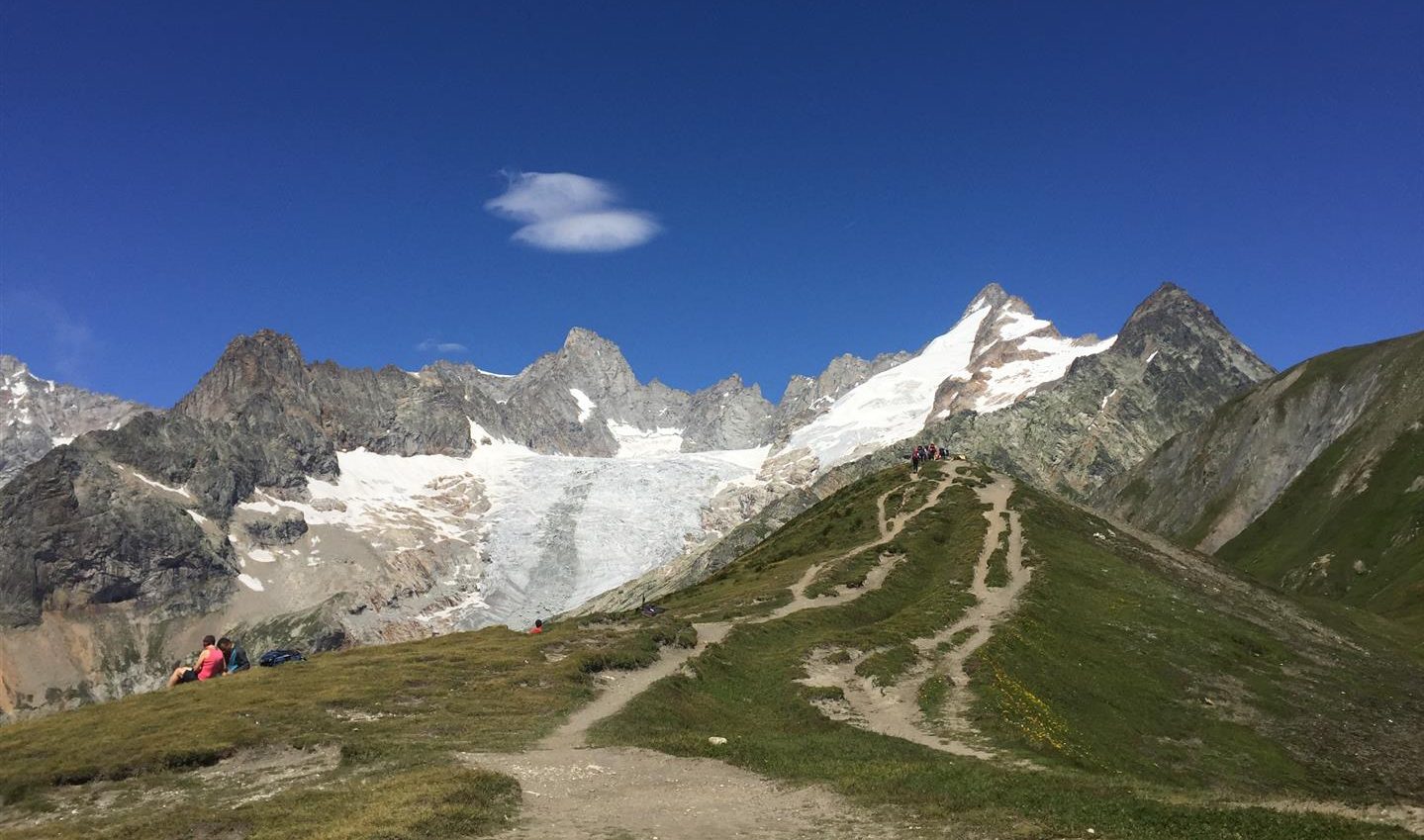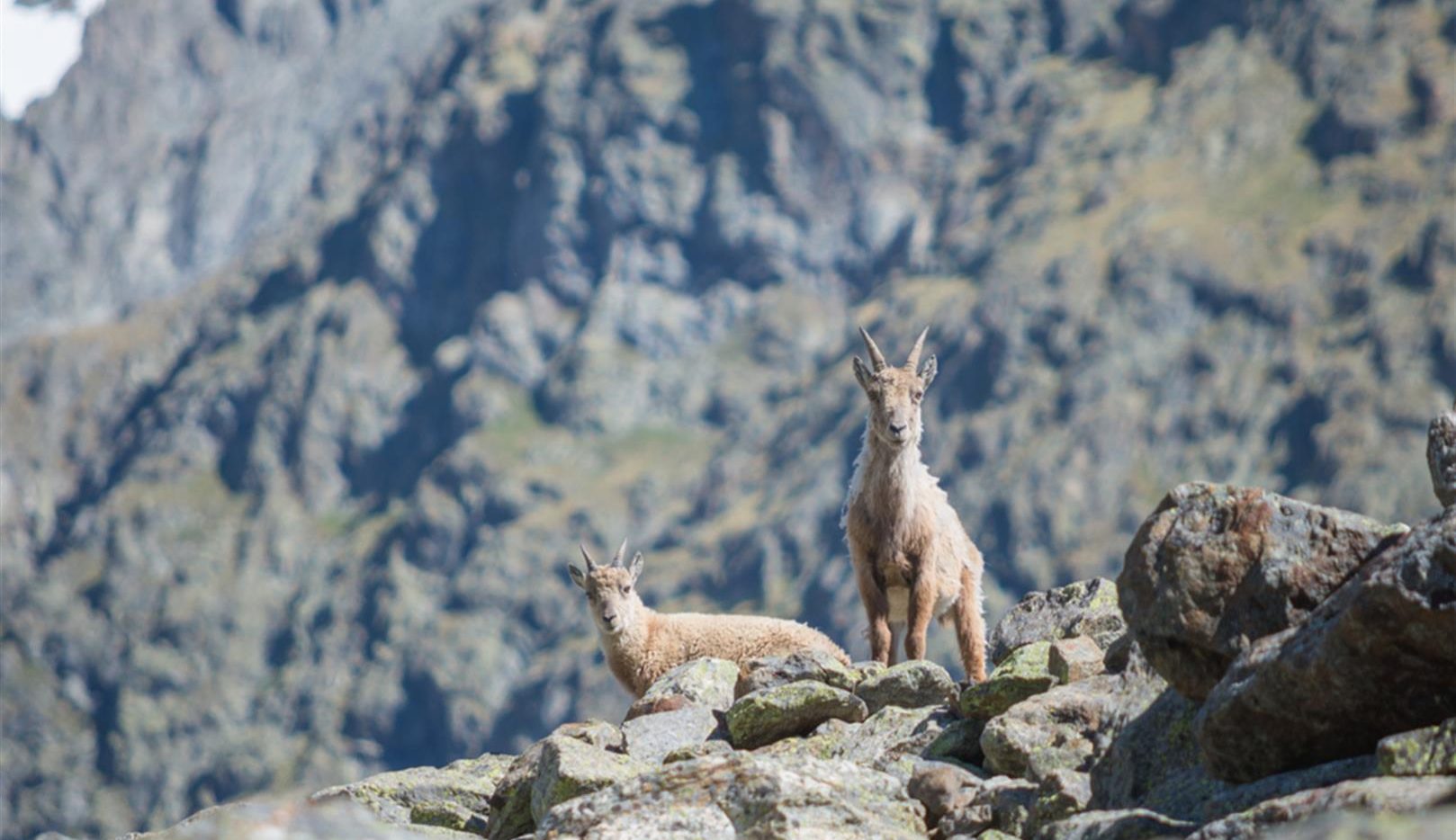
The Tour Du Mont Blanc – Seven valleys, three countries, and a sense of the divine
The Tour Du Mont Blanc is a 170km walk around the base of the highest mountain in Europe. It gives you a front-row seat to one of the most spectacular mountain scapes on earth, and allows you to share the same rarefied environment as those who take on the challenge of the summit.
Fourteen days, seven valleys and three countries
Taking about 14 days for the full trek, the TMB, as it’s known, is one of the most popular long-distance walks in Europe, and once you’ve completed it, you’ll know why.
Seven distinct valleys spread out from the towering snow-capped mountain, and the walk takes you through each and every one of them, and through France, Italy and Switzerland too. So in addition to the serrated, and elevated horizon that constantly surrounds you, and constantly changes, you’ll also dip in and out of three distinct cultures.
All of them alpine in nature, of course, but all quite different, bringing their own personality, flavour and taste to the scenery. Cheeses, wines, broths & stews, fondues, cured meats and schnapps all specific to the valley, and the country you’re visiting that particular day.
And in contrast to those who grab ice picks, don crampons and sleep in tents, you will be staying in traditional alpine chalet’s, family-run B&Bs or boutique hotels instead. No matter how quaint the villages though, or how divine the wine, the hero of the walk is always going to be Mont Blanc.

Conquering Mont Blanc
Standing at 4,810 metres tall, Mont Blanc was unconquered by man until 8th August 1786.
To put the time into perspective, the first fleet left Plymouth a year later, setting off to build a new life on the other side of the world, while across the Atlantic thirty-nine people signed the Constitution of the United States, and began building a new world right beneath them.
Back in the Alps, however, a race was underway to reach the top of Mont Blanc, spurred on, as is often the case with great human endeavour, by the promise of a prize. The Swiss scientist and adventurer, Horace Bénédict de Saussure, had long been obsessed with the mountain, but had never been able to reach the top. So his offer of a cash prize to the first person to claim the summit also came with a caveat. The winner had to go back up, taking Saussure along for the trip.
Nobody knows how much the prize was, but it was enough for people to converge on the mountain, and before long Jacques Balmat and Michael Paccard completed the task, and then returned with Saussure.
Even today a first ascent is a big deal, but back then it sparked the imagination of the world, and is generally viewed as the birth of modern mountaineering. So when you’re wandering through a beautiful field of wildflowers, gazing up at the heights, you’re looking at the origins of man’s assault on the highest mountains on earth. A sobering thought to say the least.
More and more reached the summit over the years, of course, Marie Paradis was the first woman in 1808, and in 1890 a no-nonsense Priest made the first ascent from the Italian side.
Obviously not content with his achievements, Father Achille Ratti began climbing the ranks of the Church thereafter, and eventually became the Pope! Now we don’t know for sure, but we’re pretty convinced, he’s got to be the only head of the Catholic Church who’s climbed one of the biggest mountains on earth.

Commence en France
Our tours start in Chamonix, a resort on the French side of the mountain where there’s a statue of Saussure and Balmat staring up at the summit, and it’s a delightful town to explore before your walk.
Chamonix hosted the very first Winter Olympics back in 1924, and to this day it’s still packed with outdoor enthusiasts, skiers & snowboarders, climbers & hikers, all drawn to this mecca for adventure.
If you’ve never seen a glacier before, take a short train ride on the Montenvers railway to see the Mer de Glace on the northern side of the mountain. This ‘Sea of Ice’ flows for a total of 12 kilometres, and covers 32 square kilometres, and as the largest glacier in France it’s an impressive sight. It’s been shrinking since 1939 however, and the industrious French have even bored tunnels to channel the meltwater, turning it into hydroelectric power. Très intelligent.
You can take a Gondola 3,843m, to the peak of Aiguille du Midi where, you can visit the beautiful Alpine Museum and learn about the exploits of those who’ve gone before you. There are books, maps and diaries to read, giving you an insight into the minds of those heroic mountain pioneers.
And finally, before you set off south towards Les Contamines, you need to sample the delights of the Savoyarde cuisine, designed to give you energy, and to be utterly delicious at the same time.
Savoyarde cooking is particular to the area, and only the French could make cheese and potatoes taste so incredible, in so many different ways. Go for a Savoyarde fondue, sample Raclette or La Tartiflette and you won’t go far wrong.
Now you’ve filled your body with calories, it’s time to go.
Continua in Italia
Leaving Chamonix you head south towards Les Houches to begin, taking in the expanse of the valley and the fresh scent of pine.
Although the amount of wildlife has reduced over the years, because of the influx of tourists, as you depart civilisation and enter the wilderness, you’ll come into contact with some of the real alpine locals.
The impressive Ibex mountain goats, with horns that arch almost half the length of their body, and the smaller Chamois goat can be seen throughout the walk, often perched incredulously on the side of a cliff.
You may also be lucky enough to see Marmot’s, standing on their back legs and whistling to their mates that someone is coming. They look like little Wombats, and actually live underground in a series of tunnels too.

The path continues on and takes you over a suspension bridge that’s shorter, but reminiscent of the precarious rope bridge in Indiana Jones. No crocodiles underneath this time, but a torrent of glacial meltwater you still wouldn’t want to fall into.
Keep an eye on the cliffs as you go, and next to the odd mountain goat, you’ll have a chance of seeing the magnificent Golden Eagle, the largest bird of prey in the Northern Hemisphere with a wingspan of almost 2.5 metres.
And if you’re lucky, you’ll see a Bearded Vulture, another impressive bird with a wingspan that reaches up to three metres! Once completely gone from the Alps, there’s been an introduction programme going on for the last 30 years, so in this part of the walk you’ve got a good chance to see the largest bird to call the Alps home.
After an overnight in Les Contamines, you’ll unknowingly cross your first international border, passing over Col de la Seigne at 2,515 metres into Italy, and begin your descent once again. You may be tempted to push on to Courmayeur, but many choose to stay the night at the mountain hostel, Rufugio Elisabetta.
Spectacularly situated at the foot of a glacier, this refuge is a welcome break for travellers, and after a selection of soups, spaghetti, lasagne or various polenta’s for dinner, you can sit on the deck outside and wash it all down with a grappa or two, as you take in the view.
The following day you’ll pass Lake Combal, and if the weather’s fine you’ll enjoy a beautiful mirror image of the mountainous backdrop, with purple and yellow wildflowers adding splashes of colour to the water.
And eventually, welcome to Courmayeur. A delightful mountain town, Italian style, which means if you’ve had enough of the adventurous lifestyle, you can wander the cobbled streets and drop into Prada, Fendi and Gucci. A luxurious slice of retail therapy, if that’s what you’re into.
Voyager à travers la Suisse
Eventually, you’ll continue your journey through Italy, and on into Switzerland. The trail is well marked throughout, so you’re never really in any danger of getting lost. Although your mind may wander as you soak up the scenery and the fresh mountain air, and consider how small you really are in this landscape of giants.
Once into Switzerland you’ll start to see a few more cows, lazing around in lush pastures seemingly without a care in the world, however don’t be fooled by their relaxed demeanour.
Chances are they’re Hérens cows, which have a particularly fiery temper, and are engaged every year in the tradition of Swiss cow fighting! Unlike bullfighting in Spain, where man takes on beast, here in Switzerland they gather to watch the combative Hérens cows take each other on, and the winner of the national Championship leaves with the curious title “Queen of Queens”.

A couple of days through Switzerland, and eventually you’ll return to Chamonix, having climbed, and descended over 11,000 meters in total during your trip, which is a fair height to say the least.
But it doesn’t feel like that. The Tour Du Mont Blanc takes you up, and when you think you’ve just about had enough it takes you back down again, into a rich green valley where you can picnic, or stay for the night in a mountain village with delicious food, great company and fine wine.
And you’ll be constantly inspired by the surroundings, the sense of scale, slow geological movement of glaciers, and the starkness of the snow-clad mountain in the centre of it all.
Some say these high places on earth take you closer to the divine. And whether you believe in the same kind of god as the adventurous Father Ratti, or another one entirely, this walk will bring you close enough to get a sense of it.
And in the end, can we really ask for any more than that..?
Find out more about the Tour du Mont Blanc and our Tour du Mont Blanc walks.


There are no comments, be the first to comment.